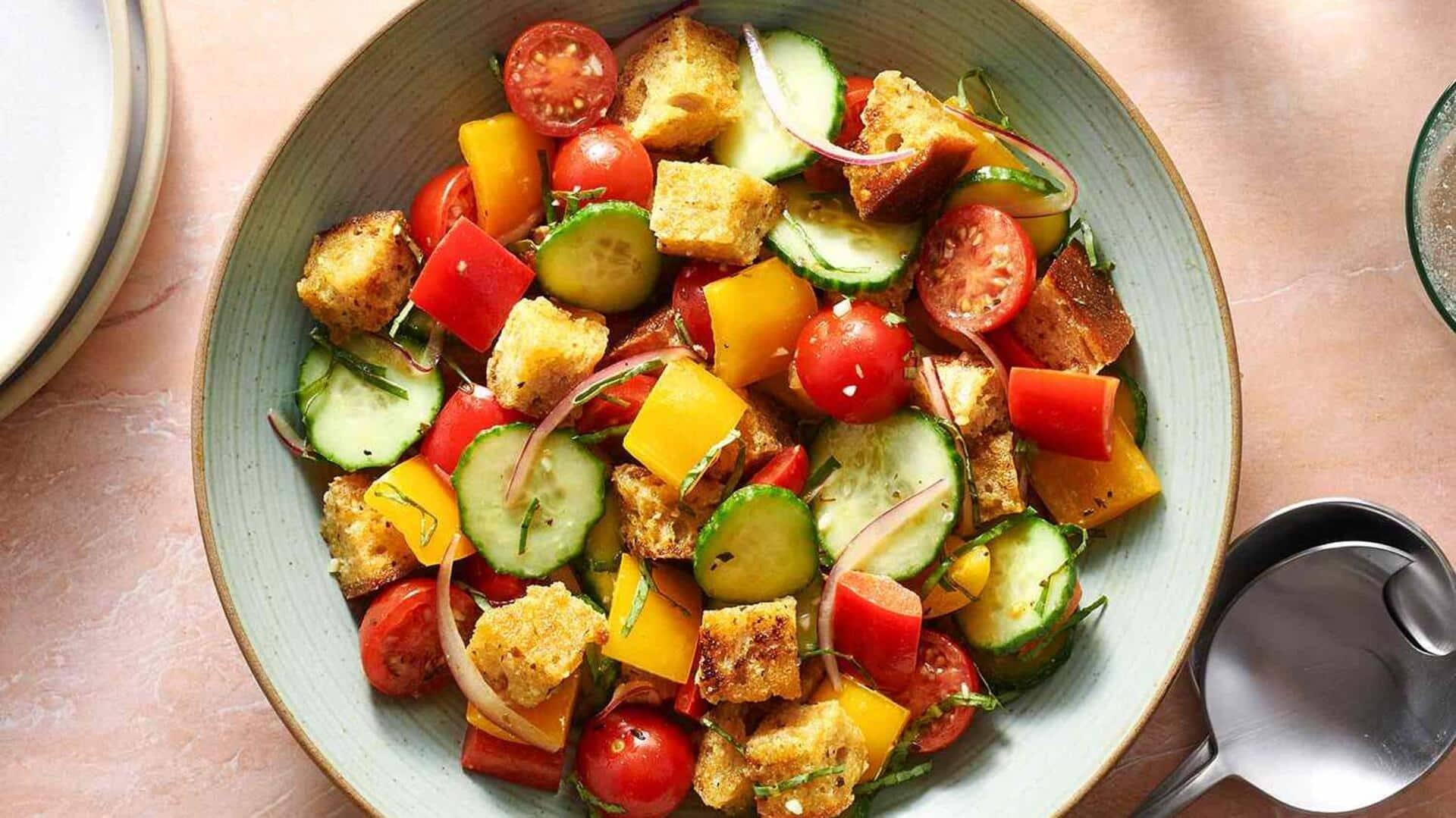
Panzanella's journey: History, evolution, and more
What's the story
Panzanella, a traditional Italian salad, has evolved significantly from its humble beginnings. Originating in the Tuscan region, this dish was initially a way to use up stale bread and fresh garden vegetables. Over time, it has become a beloved staple in kitchens worldwide. The journey of panzanella reflects cultural shifts and culinary innovations that have shaped its current form. This article explores the historical journey of panzanella and its place in today's kitchens.
Tuscan roots
Origins in Tuscany
Panzanella traces its roots back to Tuscany, where it originated as a peasant dish. In earlier times, bread was an essential part of every meal and nothing went to waste. Stale bread would be soaked in water or vinegar and combined with fresh vegetables such as tomatoes and cucumbers from the garden. This simple, yet delicious, mix fed many families during lean seasons.
Culinary transformation
Evolution through centuries
As centuries passed, panzanella transformed drastically depending on regional tastes and available ingredients. The addition of olive oil became a common thing as it gained popularity across Italy. Some regions added herbs like basil or parsley for flavor. These additions not only enhanced the taste but also reflected local culinary practices that shaped it into what it is today.
Worldwide appeal
Global popularity surge
In the past few decades, panzanella has gained worldwide fame, courtesy of globalization and a rising fascination for Mediterranean cuisine. Chefs across the globe have embraced this adaptable salad, adding local elements but keeping its key ingredients—bread and vegetables—intact. This flexibility makes panzanella authentic yet relevant in different culinary domains, honoring its legacy while welcoming new elements.
Contemporary twists
Modern interpretations
Today's chefs continue the legacy of experimenting with new variations of traditional recipes by adding unique ingredients like avocados or different types of cheese for added texture or flavor profiles without compromising on the authenticity completely. These modern interpretations keep panzanella relevant in the midst of changing food trends around the world. They pay tribute to its rich history deeply rooted in Italian culture itself.